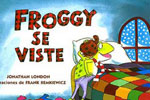|
||||||||||||||||||||||||||||||||||||||||||||||||||||||||||||||||||||||||||||||||||||||||||||||||||||||||||||||||||||||||||||
 |
||||||||||||||||||||||||||||||||||||||||||||||||||||||||||||||||||||||||||||||||||||||||||||||||||||||||||||||||||||||||||||
 |
||||||||||||||||||||||||||||||||||||||||||||||||||||||||||||||||||||||||||||||||||||||||||||||||||||||||||||||||||||||||||||
Reflexive Verbs in Spanish
A “reflexive” sentence is one in which the subject does something to him/herself. Or put another way, the subject and the object of the sentence refer to the same person. The action of the verb in a reflexive sentence is “reflected” back onto the subject. Compare: I read the book. In the first sentence the action of the verb, reading, is passed onto an object, the book. The sentence is not reflexive. But in the second sentence, the person doing the washing and the person being washed is one and the same. The second sentence is reflexive. In English we deal with reflexives by adding words like “himself” or “yourself” to the sentence. In Spanish we use a special class of verbs known as “reflexive verbs” which have their own unique rules. Spanish Reflexive VerbsIn their infinitive
form reflexive verbs end with a
The Conjugating Reflexive VerbsTo conjugate a reflexive verb we first take the Yo afeitarse. Note: In English when someone says “I shave” it’s understood that they’re talking about shaving themselves. Rarely does anyone say, “I shave myself,” but in Spanish we’re a bit more explicit. This is a good start, but we’re not quite done. Just as the verb ending, “-o,” needs to agree with the subject, our reflexive pronoun, se, needs to agree as well. In this case, the se needs to become me: Yo se afeito. So the reflexive pronoun se becomes me when the subject is yo. What about other subjects? Spanish Reflexive PronounsHere’s the list of reflexive pronouns in Spanish, with subject pronouns for comparison: subject pronouns:
reflexive pronouns:
Therefore a complete set of sentences using afeitarse as the verb would look like this: Yo me afeito. Notice that with reflexive verbs, the subject, the reflexive object, and the verb ending are all in agreement (because the subjects are doing the action to themselves). Some more examples: Tú te despiertas. Ella se levanta. Nosotros nos sentamos. Uds. se acuestan. Two things to be aware of before we get any further:
So how do you know if a verb is reflexive or not? Well, the idea that reflexive verbs are used when the subject does the action to him/herself is a good starting place, but the truth is you really need to memorize which verbs are reflexive and which ones aren’t. You won’t be able to tell from context whether you need to add a reflexive pronoun or not. For some reflexive verbs it’s quite obvious why they are reflexive but other reflexive verbs may make no sense to you whatsoever. Common Reflexive VerbsHere’s a list of commonly used reflexive verbs:
A few things to note from the list above:
Note: Ponerse means “to put on” but it can also mean “to become.” Reflexive Verbs As IntensifiersSometimes we can add a reflexive pronoun to a verb that isn’t normally reflexive to “intensify” it or give it a stronger meaning. We can also use reflexive pronouns to convey a sense of “getting” or “becoming”:
Possessive Adjective ReplacementWhen using reflexive verbs we frequently omit possessive adjectives and use definite articles instead (this tends to happen with body parts and articles of clothing). The reflexive pronoun does the job of the possessive adjective: Yo me seco el pelo. Juana se lavó las manos. Tú te pones el abrigo. Reflexive Pronoun PlacementLike other pronouns, reflexive pronouns are placed before a “normal” conjugated verb. But they can attached to present participles and infinitives if they’re available. Reflexive pronouns must be attached to affirmative commands. Some examples:
¡Ojo!The reflexive object must agree with the subject even if the verb it’s attached to isn’t conjugated: Tú puedes lavarte las manos. Nosotros queremos acostarnos temprano. Using Mismo For EmphasisIn addition to using a reflexive pronoun, we can also use a form of mismo to really emphasize the reflexive nature of an action: ¿Porqué no puedes perdonarte a ti mismo? Ella se cuida a ella misma. |
||||||||||||||||||||||||||||||||||||||||||||||||||||||||||||||||||||||||||||||||||||||||||||||||||||||||||||||||||||||||||||
 This work by Spanish411.net is licensed under a Creative Commons Attribution-NonCommercial-ShareAlike 4.0 International License. This work by Spanish411.net is licensed under a Creative Commons Attribution-NonCommercial-ShareAlike 4.0 International License. |

